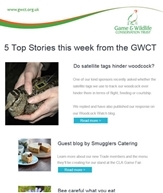 By Dr. Niamh McHugh, Postdoctoral Scientist
By Dr. Niamh McHugh, Postdoctoral Scientist
After a long winter in the lab analysing data and identifying invertebrates the Farmland Ecology team are excited to be back in the field!
This summer we have started up a new project looking at barn swallow foraging on arable land in relation to agri-environment scheme habitat options. The swallow is a fantastic study species that is often overlooked in farmland studies, particularly in an arable context.
Since the 1970’s European swallows have seen widespread declines that are independent of changing weather patterns. Farmland intensification has been implicated as a potential contributor in these declines through reducing nest site availability and/or aerial invertebrate abundance.
The UK’s agri-environment schemes contain several options that may boost aerial invertebrate abundance (e.g. floristically enhanced margins, nectar flower mix), however, to date farmland bird studies have focused on bird species that forage either on the ground or within the vegetation and so the potential benefit of these options to aerial invertebrate feeders are unknown.
Foraging swallows are a familiar sight across the countryside, they feed almost exclusively in flight, suddenly changing their path in favour of a new pocket of food. Over the coming months we will be recording this activity across farmland in Hampshire and Wiltshire in addition to measuring the abundance of their prey items in different arable habitats.
Photo by Andreas Trepte.
 Free weekly newsletter
Free weekly newsletter
Stay updated and get all the latest GWCT blog updates and news delivered straight to your inbox each week.
Sign up FREE to the Weekly GWCT Newsletter >